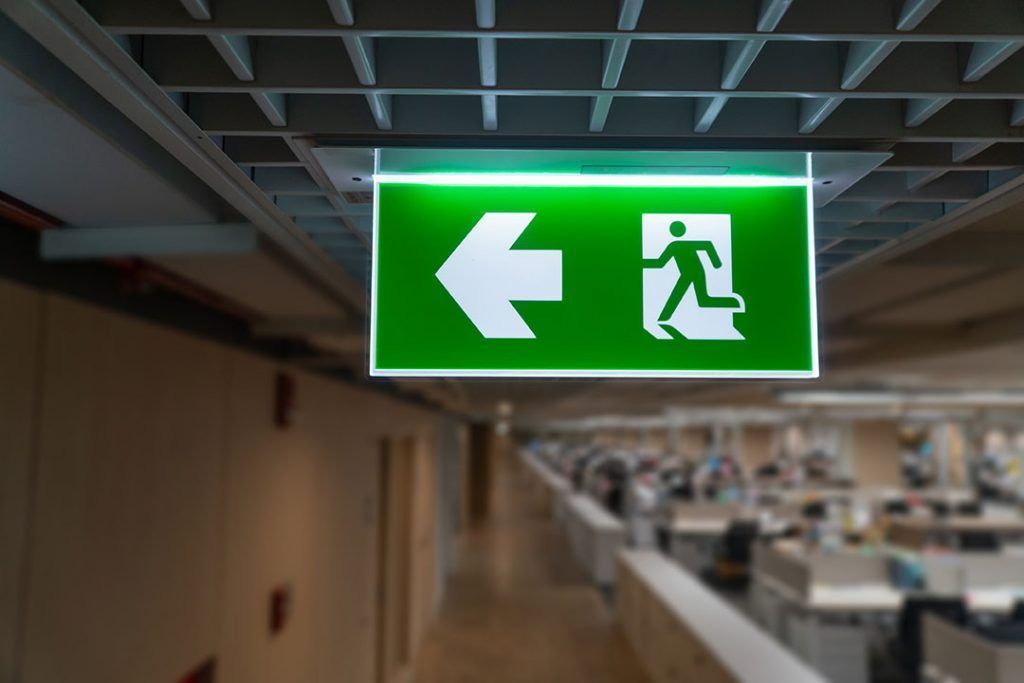
How to protect your employees (and your business) during an emergency
Manual headcounts can put you, your employees, and your business at risk
Most businesses are required* to have an Emergency Action Plan (EAP). Even small businesses, retail stores, and offices are required to have procedures in place in the event of an emergency, and their employees need to have a clear understanding of what those procedures are.
According to the United States Occupational Safety and Health Administration (OSHA), an EAP must include:
- A preferred method for reporting fires and other emergencies;
- An evacuation policy and procedure;
- Emergency escape procedures and route assignments, such as floor plans, workplace maps, and safe or refuge areas;
- Names, titles, departments, and telephone numbers of individuals both within and outside your company to contact for additional information or explanation of duties and responsibilities under the emergency plan;
- Procedures for employees who remain to perform or shut down critical plant operations, operate fire extinguishers, or perform other essential services that cannot be shut down for every emergency alarm before evacuating; and
- Rescue and medical duties for any workers designated to perform them.
The risks of not having an EAP, or of having a poorly planned EAP, can be devastating for employees and for businesses themselves. Fines, liability, and property damage are all potential consequences, as are the risk of injury or even loss of life to employees.
One of the easiest ways to improve your EAP is to improve your method of accounting for personnel during an evacuation. The most common method that organizations use is paper sign-in lists and visitor logs. When people enter a building or area, they manually sign-in on a sheet of paper; then, during an emergency, muster captains use the sign-in sheets to call roll and identify who has made it to the assembly point, and check them off the list as having evacuated.
Even in smaller groups, this process can quickly turn into chaos. Muster captains need to retrieve the sign-in sheets, potentially delaying the start of check-in at the assembly point. If there are multiple entrances/exits, as well as multiple assembly points, this can also mean incomplete lists, which makes compiling a full list and accounting for everyone nearly impossible.
Even when a full list is available, other problems with this process can present themselves. If handwriting on the sign-in list isn’t legible, the muster captain may struggle to read the names, and therefore not know who signed in, or if they are present at the assembly point. If someone signed in, but forgot to sign out before they left the building, it could mean that muster captains are scrambling to account for someone who wasn’t there to begin with.
Most importantly, manually calling roll and checking people off a list takes up the one thing you have least of during an emergency – time. The longer it takes for muster captains to discover who’s missing, the longer it takes for responders to begin search and rescue operations, which could be the difference between life and death for people not able to evacuate. Incomplete or inaccurate sign-in lists also put responders in unnecessary danger if they initiate searches for people who may have just forgotten to sign out before the emergency.
By implementing procedures that automate every step of this process though, many of the risks associated with these manual methods can be drastically reduced or eliminated.
With an RFID check-in system like stratus-io, scanners can be mounted on doors, next to turnstiles, or anywhere that is convenient to where people are entering and exiting. Scanners can also be mounted at designated assembly points for people to check into as they evacuate. This can decrease the time it takes to check-in by over 300%, meaning that even for large groups, everyone can be accounted for in the span of just a few minutes.
Not only is the speed and accuracy of headcount improved with stratus-io, but there are additional advantages to automated check-in that aren’t possible with paper lists.
For instance, since data captured with stratus-io is updated in the database in real-time, this can give responders access to information about the last known location of people that didn’t check-in at an assembly point during the evacuation. This can help narrow the search focus and significantly decrease the time it takes to find a missing person, as well as lower the risk to responders in potentially life-threatening situations such as fires or chemical spills. If employees were able to evacuate but were not able to make it to a designated mustering point, they also have the ability to check-in from the app on their mobile devices.**
In addition, you can store and access information in your database that you might not otherwise have on hand during an emergency. Information such as phone numbers and emergency contact details can be included in the roster and visible to muster captains from their mobile devices. Relevant notes, such as a medical issue that impedes someone’s ability to evacuate or that requires assistance, can also be included.
It is impossible to predict an emergency, but not to prepare for one. Try stratus-io today so that you, your employees, and your business are protected if the worst happens.
*If fire extinguishers are required or provided in your workplace, and if anyone will be evacuating during a fire or other emergency, then OSHA‘s [29 CFR 1910.157] requires you to have an EAP.
**Available end of October 2019.


